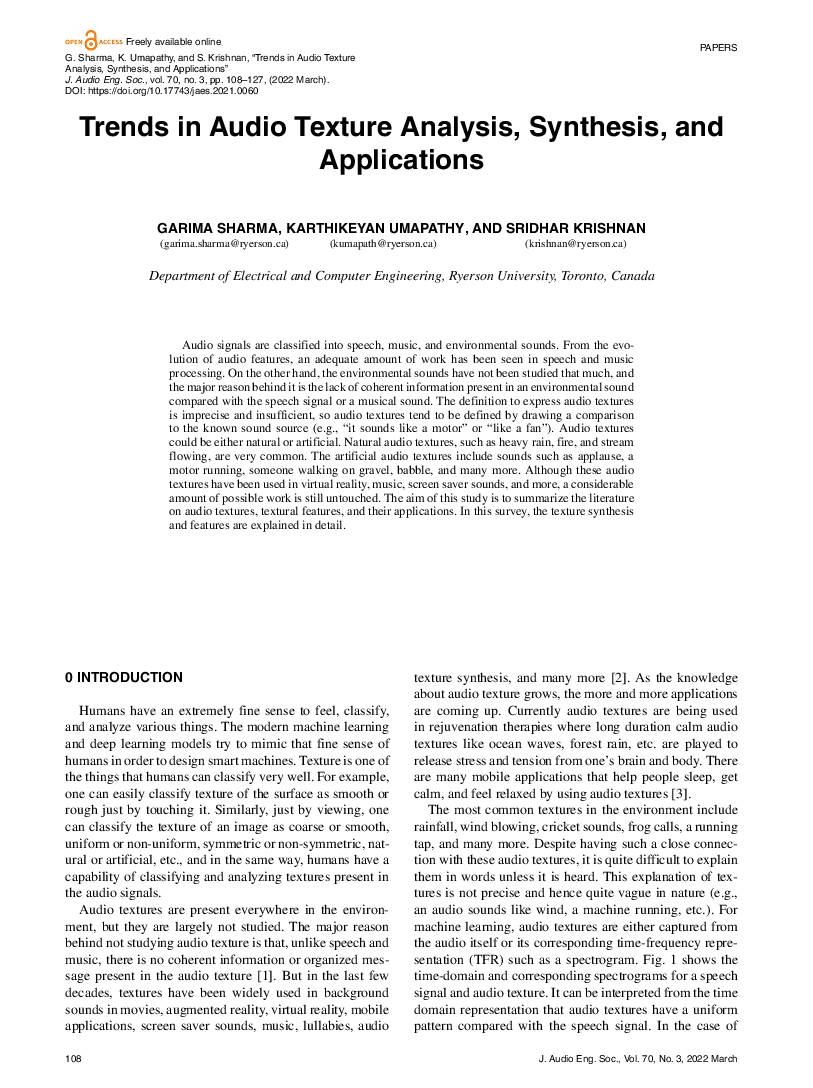Home / Publications / E-library page
You are currently logged in as an
Institutional Subscriber.
If you would like to logout,
please click on the button below.
Home / Publications / E-library page
Only AES members and Institutional Journal Subscribers can download
Audio signals are classified into speech, music, and environmental sounds. From the evolution of audio features, an adequate amount of work has been seen in speech and music processing. On the other hand, the environmental sounds have not been studied that much, and themajor reason behind it is the lack of coherent information present in an environmental sound compared with the speech signal or a musical sound. The definition to express audio textures is imprecise and insufficient, so audio textures tend to be defined by drawing a comparison to the known sound source (e.g., "it sounds like a motor" or "like a fan"). Audio textures could be either natural or artificial. Natural audio textures, such as heavy rain, fire, and stream flowing, are very common. The artificial audio textures include sounds such as applause, a motor running, someone walking on gravel, babble, and many more. Although these audio textures have been used in virtual reality, music, screen saver sounds, and more, a considerable amount of possible work is still untouched. The aim of this study is to summarize the literature on audio textures, textural features, and their applications. In this survey, the texture synthesis and features are explained in detail.
Author (s): Sharma, Garima; Umapathy, Karthikeyan; Krishnan, Sridhar
Affiliation:
(See document for exact affiliation information.)
Publication Date:
2022-03-06
Import into BibTeX
Permalink: https://aes2.org/publications/elibrary-page/?id=21554
(937KB)
Click to purchase paper as a non-member or login as an AES member. If your company or school subscribes to the E-Library then switch to the institutional version. If you are not an AES member Join the AES. If you need to check your member status, login to the Member Portal.

Sharma, Garima; Umapathy, Karthikeyan; Krishnan, Sridhar; 2022; Trends in Audio Texture Analysis, Synthesis, and Applications [PDF]; ; Paper ; Available from: https://aes2.org/publications/elibrary-page/?id=21554
Sharma, Garima; Umapathy, Karthikeyan; Krishnan, Sridhar; Trends in Audio Texture Analysis, Synthesis, and Applications [PDF]; ; Paper ; 2022 Available: https://aes2.org/publications/elibrary-page/?id=21554
@article{sharma2022trends,
author={sharma garima and umapathy karthikeyan and krishnan sridhar},
journal={journal of the audio engineering society},
title={trends in audio texture analysis, synthesis, and applications},
year={2022},
volume={70},
issue={3},
pages={108-127},
month={march},}